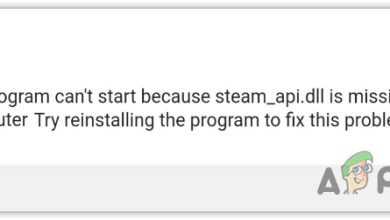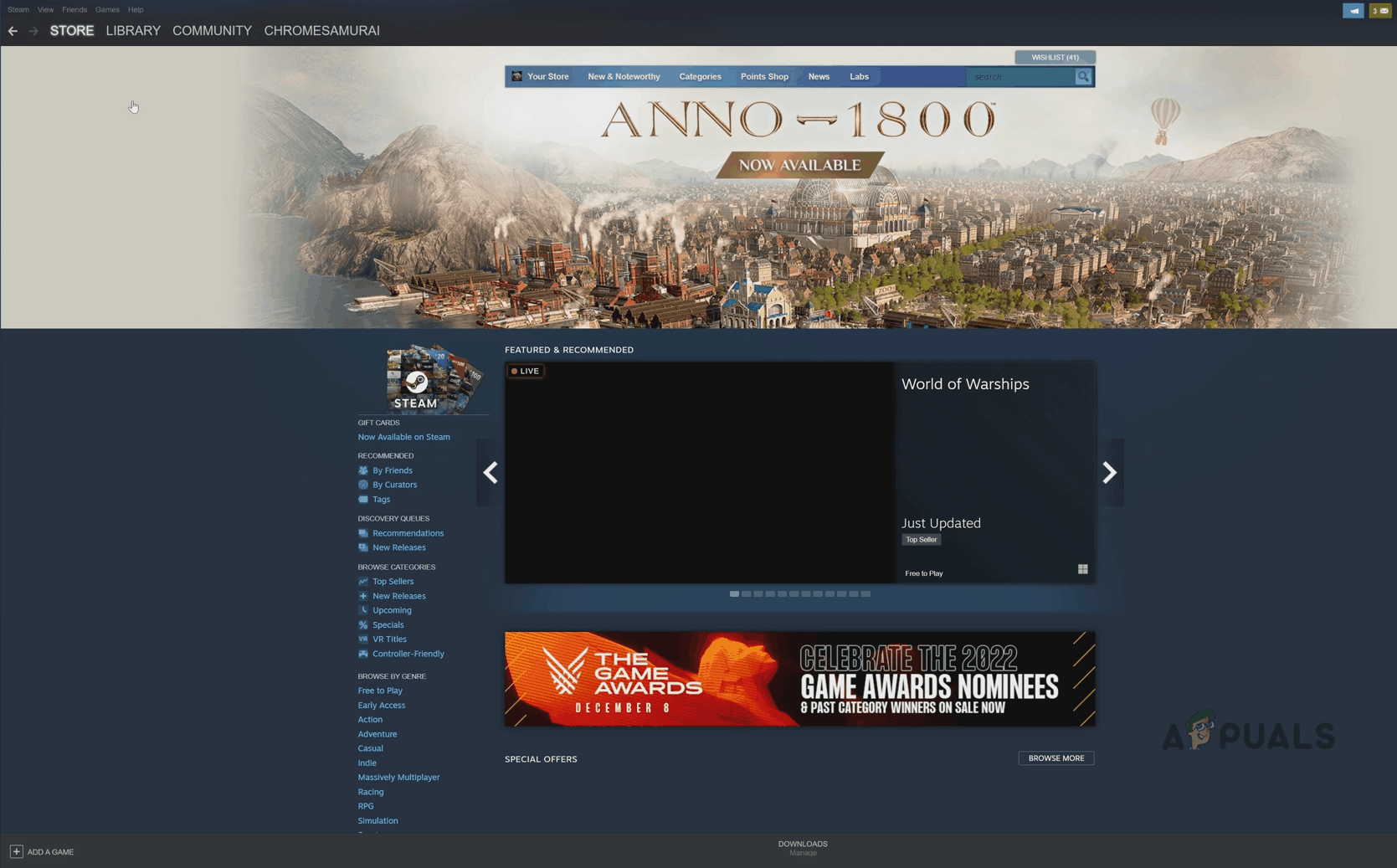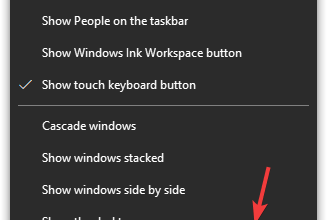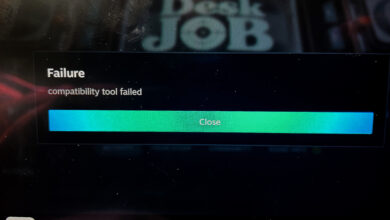Fix: Steam is Having Trouble Connecting to the Steam Servers
This Steam-related problem appears after trying to log into your Steam account on the Desktop version of the app, just after you input the login info or after the auto-login process has started. The problem is a very serious one as multiple users haven’t been able to access the Steam client at all for a couple of days.
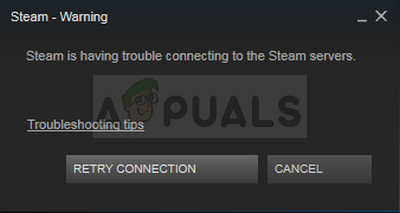
Before moving on with the solutions, make sure Steam servers are not down. Also, log-in to the Steam website and if it logs in fine, then you are not banned from Steam. Moreover, power off your system and network equipment, disconnect all the peripherals (mouse, keyboard, monitor and etc.) and then power on and connect the keyboard and mouse when required and after the system has started, check if the problem is solved. Also, try to use Steam in offline mode and then switch to online mode to solve the problem.
Many different solutions to the problem emerged after a while and we have chosen the solutions which have helped the most users and presented them to you in a detailed article. Follow the instructions and hopefully, you will resolve the problem!
What Causes the “Steam is having trouble connecting to the Steam servers – Could Not Connect to Steam Network” Error Message in Steam client?
- Various broken or misconfigured Internet connection settings which can be resolved with simple commands in administrative CMD
- Administrator permissions being required by the Steam executable in order to solve permissions/networking problems
- UDP protocols may not be a good thing to use to try forcing TCP protocols
1. Reset WinSock
“netsh winsock reset” is a helpful command that you can use in Command Prompt to reset winsock catalog back to default setting or its clean state. You can try this method if you are experiencing the “Steam is having trouble connecting to the Steam servers” when trying to launch and login into Steam.
- Search for “Command Prompt” by typing it either right in the Start menu or by pressing the search button right next to it. Right-click the first entry which will pop up as a search result and select the “Run as administrator” context menu entry.
- Additionally, you can also use the Windows Logo Key + R key combination in order to bring up the Run dialog box. Type in “cmd” in the dialog box which appears and use the Ctrl + Shift + Enter key combination in order to run Command Prompt using administrator privileges.
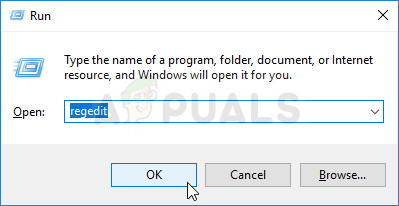
- Type in the following command in the window and make sure you press Enter after typing it. Wait for the “Winsock reset completed successfully” message or something similar to know that the method has worked and you haven’t made any mistakes while tying.
netsh winsock reset netsh int ip reset reset.log hit
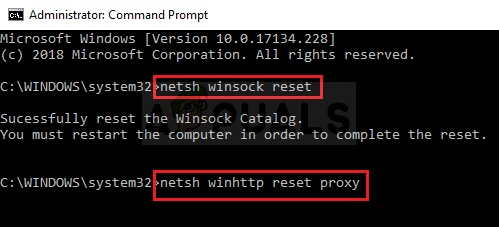
- Check to see if you still struggle with problems regarding your Steam problems.
2. Run Steam as Administrator
Running anything with administrator permissions is sure to provide some help for plenty of errors and this one is not different. Simply running the Steam client as an administrator may be enough for you to stop seeing the annoying error once and for all.
- Locate the Steam shortcut or executable on your computer and open its properties it by right-clicking its entry either on the Desktop or the Start menu or the Search results window and choose Properties from the pop-up context menu.
- Navigate to the Compatibility tab in the Properties window and check the box next to the Run this program as an administrator option before saving the changes by clicking OK or Apply.
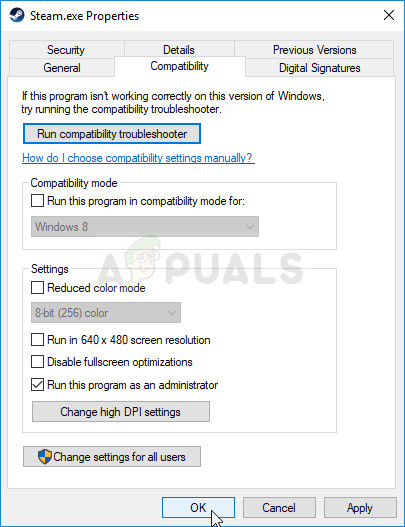
- Make sure you confirm any dialogs which may appear which should prompt you to confirm the choice with admin privileges and Steam should launch with admin privileges from the next startup. Open it by double-clicking its icon and try relaunching the login process to see if the error still appears.
3. Add an Exception for Steam Executables
The latest Steam update was reported to cause issues with Windows Defender Firewall. If you have Windows Defender running on your computer, you might want to add an exception for the Steam executable in order to make it run properly.
- Start up Control Panel by searching for the utility in the Start button or by clicking the Search button or the Cortana button at the left part of your taskbar (bottom left part of your screen).
- After Control Panel opens, change the view to Large or Small icons and navigate to the bottom in order to open the Windows Defender Firewall.
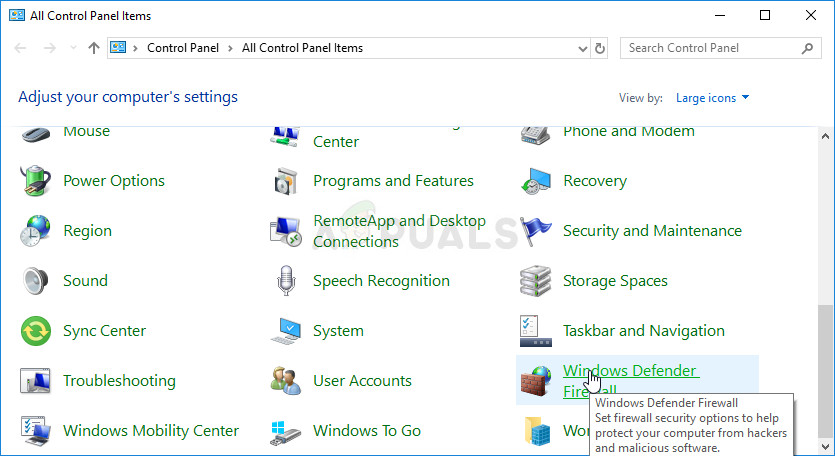
- Click on Windows Defender Firewall and click on the Allow an app or feature through Windows Firewall option from the left side list of options. A list of installed apps should open. Navigate to where you installed Steam and choose its main executable along with other executables in the folder.
- Click OK and restart your computer before retrying the login process after launching Steam.
4. Add a Launch Option to the Steam Executable
This specific launch option ‘-tcp’ will force Steam to use the TCP protocol over UDP. This is not a much significant change from the user’s perspective but it has definitely helped users resolve the “Steam is having trouble connecting to the Steam servers” problem as the problem went away after performing the steps below:
- Navigate to your Steam installation folder. If you haven’t configured any changes during the process of installation regarding the required installation folder, it should be Local Disk >> Program Files or Program Files (x86).
- However, if you have the Steam program’s shortcut on the desktop, you can simply skip the creation of a shortcut in the step below.

- Locate the exe file in the main folder, right-click on it, and choose to Create a shortcut on Desktop. Navigate to that shortcut, right-click on it and stay in the Shortcut tab.

- In the Target area, add a space after the last quotation mark and add ‘-tcp’ before clicking OK. Check to see if the problem still appears.
5. Reinstall Steam
Reinstalling Steam is one of the least popular methods and there is a reason why it’s placed so low on our list. The method has solved the problem for so many users but it should be a last resort as there are plenty of simpler methods you should try out before doing this.
- Make sure you back up every library folder you wish to preserve on your computer and take note of their proper locations so that you can add them back once Steam is reinstalled.
- Click on the Start menu and open Control Panel by searching for it. Alternatively, you can click on the gear icon in order to open settings if you are using Windows 10.
- In Control Panel, select to View as: Category at the top right corner and click on Uninstall a Program under the Programs section.
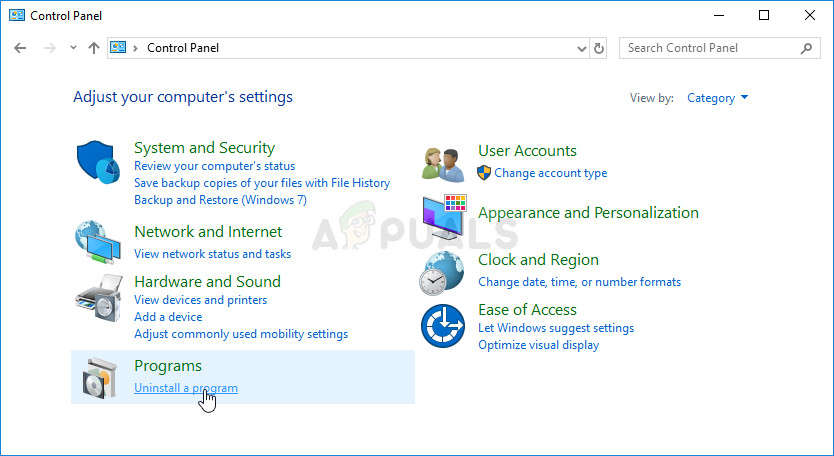
- If you are using the Settings app, clicking on Apps should immediately open a list of all installed programs on your PC.
- Locate the Steam entry on the list and click on it once. Click on the Uninstall button above the list and confirm any dialog boxes which may appear. Follow the instructions on-screen in order to uninstall Steam and restart your computer afterward.
6. Change Steam’s Internet Protocol
Steam originally uses the UDP (User Datagram Protocol) for the transmission of data. We can try changing it to TCP (Transmission Control Protocol). As we all know TCP is more reliable whereas UDP is mostly faster. If we encounter an error, we can try changing protocols to see if they are the problem.
- Launch your Task Manager by pressing ⊞ Win + R button. This should pop-up the Run. In the Run box type “taskmgr” to open the task manager.
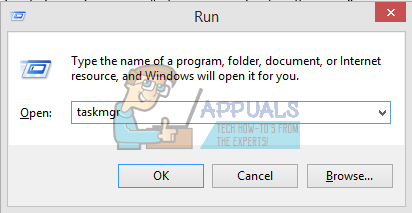
Run Task Manager - End all Steam related processes starting from the process ‘Steam Client Bootstrapper’.

End Steam Client Bootstrapper in Task Manager - Create a shortcut of steam in your steam folder. The default location for your steam folder should be
C:\Program Files (x86)\Steam
- Press ⊞ the Win + R button. This should pop-up the Run application. In the dialogue box write
C:\Program Files (x86)\Steam
Or if you installed Steam in another directory, you can browse to that directory and you can proceed with steps mentioned below.
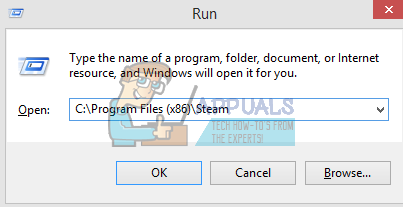
Run C:\Program Files (x86)\Steam - Now to ensure nothing bad happens to your default Steam.exe file, we will make a shortcut of your steam.exe file and paste it into your steam folder. It should look something like this:
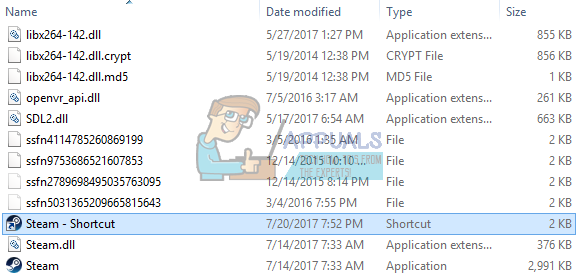
Create a Shortcut of Steam.exe - Now that you’ve got your shortcut set up, you’re going to right-click it and go to its properties.
- In the target dialogue box, write “-tcp” in the end. So the entire line looks like:
“C:\Program Files (x86)\Steam\Steam.exe” –tcp
Please remember to give a space after the default line in the target dialogue box.
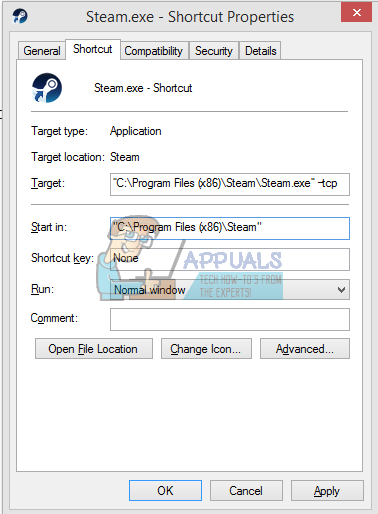
Add -TCP at End of C:\Program Files (x86)\Steam\Steam.exe” in Target box of the Shortcut - Apply the changes and close the window. Launch Steam using the shortcut and it will work as expected.
7. Delete/Alter ClientRegistry.blob
We can try and see if ClientRegistry.blob is giving you the trouble.
- Completely exit Steam and end all tasks as mentioned in the solution above.
- Browse to your Steam directory. The default one is
C:\Program Files\Steam
- Locate ‘ClientRegistry.blob’’.

Locate ClientRegistry.blob - Rename the file to ‘ClientRegistryold.blob’.
- Restart Steam and allow the file to be recreated.
Hopefully, your Client will run as expected. If it still doesn’t work, follow the steps listed below.
8. Troubleshoot the Internet Connection
Before re-installing Steam client, we should thoroughly check whether our internet connection is working normally or not. Open your browser and see if your computer can connect to the internet normally. You should also check if your network adapter is functioning properly. Below are the steps to check and verify.
- Press ⊞ Win + X A menu will pop up and you will select “Device Manager” from this menu.
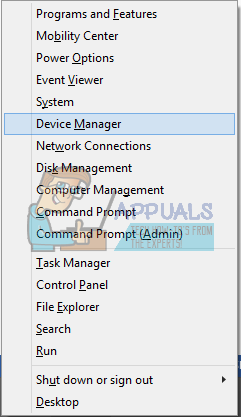
Open Device Manager - A window will come forth consisting of different entities. Search for “Network adapter” and expand it. Here you will find your WiFi/LAN adapter along with its official name.

Expand Network Adapters in Device Manager
- – This icon means that your network adapter is currently enabled and working as expected.
- – This means that your network adapter is currently disabled. To resolve this issue, right-click on the network adapter and click “enable”.
- To check if your network adapter is working properly, right-click on that adapter and select “Properties”. Here you will see a window displaying “This device is working properly” if there are no issues.
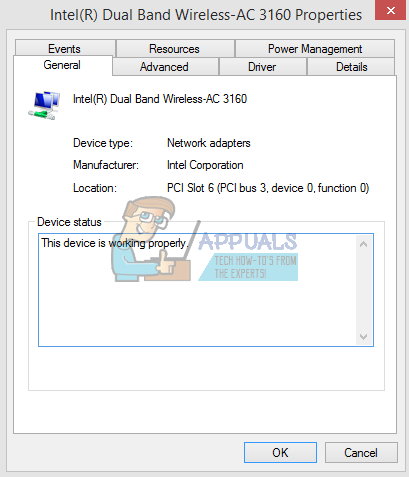
Check Device Status
If the problem persists, we can proceed with the troubleshooting. Please note that if you made any recent changes to your network/wifi settings, you should revert.
Now we will try to reset some network settings. Below are the steps mentioned which will guide you to flushdns etc.
- Press ⊞ Win + R In the dialogue bar, type “cmd”. This should launch the command prompt.
- In the command prompt type the following commands and press enter after each line:
ipconfig/release ipconfig/all ipconfig/flushdns ipconfig/renew netsh int ip set dns netsh winsock reset
- After executing the following commands, restart your computer and check if Steam is running properly.
9. Update Network Card Driver
Network drivers are the main components that communicate between the network hardware and the operating system. An outdated/corrupted/non-compliant network driver may cause Steam to show the current error. In that case, updating the driver to the latest version (or rolling back to the previous version) may solve the problem. You can also try unplugging the network hardware physically after uninstalling the driver and placing it back in.
10. Temporarily Disable Antivirus/Firewall
As Steam could not connect to its servers, the problem may be caused by your antivirus/Firewall that could be blocking the communication between Steam and its servers. In that case, disable your antivirus or turn off your Firewall. These applications usually block access to Steam’s servers because of a false positive.
Warning: Disable your antivirus/Firewall at your won risk as this step will make your system more vulnerable to threats like viruses, malware, and malicious attacks, etc.
11. Use Another Network
Non-communication between Steam and its servers could be caused by your ISP as ISPs deploy different techniques to safeguard its users and control web traffic, and in this process can block a vital service for Steam. In that case, using another network may solve the problem. If no other network is available, then you can use your mobile phone’s hotspot to rule out this possibility. If you are using a VPN or proxy, then disable the VPN/proxy and check if Steam is functioning properly.
12. Update Windows
Outdated Windows can cause a lot of problems for a user and the cause of error under discussion may already have been rectified in the latest Windows update version. In that case, updating Windows to the latest version may solve the problem. Make sure that you have an active internet connection and keep the computer on till the updates are finished.
- Press Windows key and type updates. Then in the resulting list, click on Check For Updates.

Check For Updates in Windows Search - Then in the updates window, click on Check for Updates.
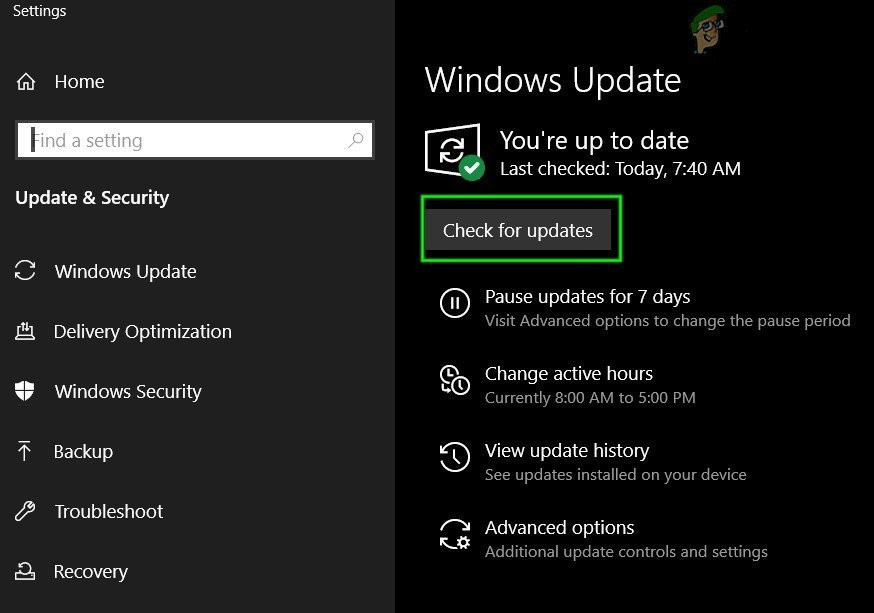
Check For Updates in Windows Update - If any updates are available, then download and install all the updates.
- After updates are installed, check if the problem is solved.
13. Rename/Move Some Steam Folders
Corruption of some Steam folders can result in non-communication between Steam and its servers. In that case, renaming these folders might solve the problem instantly. When Steam launches and doesn’t find the required directories that it is looking for, it will automatically create new folders with default values. This will ensure that we have fresh configuration files and caches.
- Exit all Steam processes.
- Now navigate to the Steam install directory, usually, it is:
C:\Program Files (x86)\Steam
or you can browse to your install directory.
- Now find the following folders
- userdata
- servers
- Now rename these folders.
- Now navigate to the folder
%steam%\config\htmlcache\
and clear all its contents.
- Now navigate to the folder
Steam\userdata[your_steam_id]\config\
- Now search for localconfig.vdf and rename it.
- Now launch Steam and check if it is functioning properly.
14. Reinstall Steam After Deleting Its Files
Exit all Steam applications before starting this solution. Please note that this won’t delete your gameplay data.
- Launch your Task Manager by pressing ⊞ Win + R button. This should pop-up the Run In the dialogue box write “taskmgr”. This should open up the task manager.
- End all Steam related processes starting from the process ‘Steam Client Bootstrapper’.
- Press ⊞ the Win + R button. In the dialogue box write
C:\Program Files (x86)\Steam
Or if you installed Steam in another directory, you can browse to that directory and you will be good to go.
- Locate the following files and folders:
Steamapps Folder (This is where all your games are located)
Userdata Folder (This is where the progress of your games is saved)
Skins Folder (This is where your steam skins are located)
Steam.exe Application (This is the launcher for Steam)
Ssfn files They may be more than one and each one may have a number in front of it (Keep it so you don’t have to wait 7 days for trade cooldown).
- Delete all the other files except the ones mentioned above and launch steam from the launcher. Steam will download some files and update itself. After completing the installation, it will prompt you to enter your credentials. After you successfully log in, the client will work as expected.
Redownload the Steam client by navigating to this link and run the downloaded executable on your computer by locating it in the Downloads folder and double-clicking on it. Follow the instructions on the screen in order to install Steam again and check to see if the same problem appears on your computer again!
